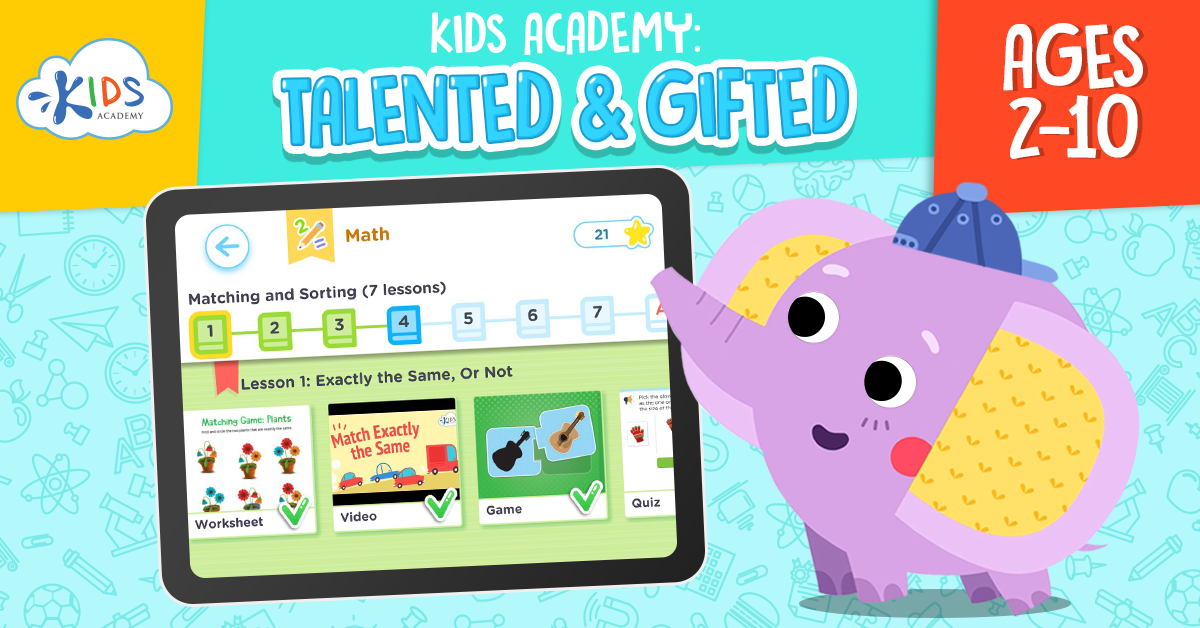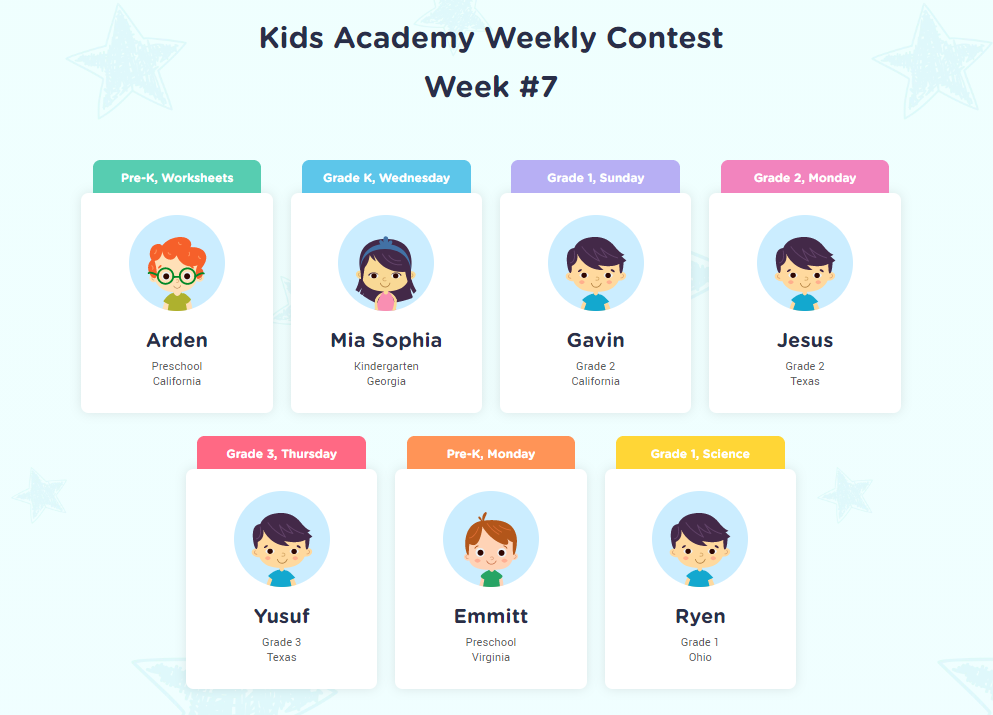Understanding light sources Science Worksheets for Ages 4-8
6 filtered results
-
From - To
Illuminate your child's understanding of light with our "Understanding Light Sources" Science Worksheets, designed specifically for ages 4-8. These engaging worksheets introduce young learners to the basics of light sources through fun activities and colorful illustrations. Children will explore natural and artificial light, promote critical thinking skills, and develop a deeper appreciation for the world around them. Each worksheet encourages hands-on learning, fostering curiosity and creativity. Perfect for home or classroom use, these resources align with educational standards and make learning about science both enjoyable and effective. Brighten your child's educational journey today!
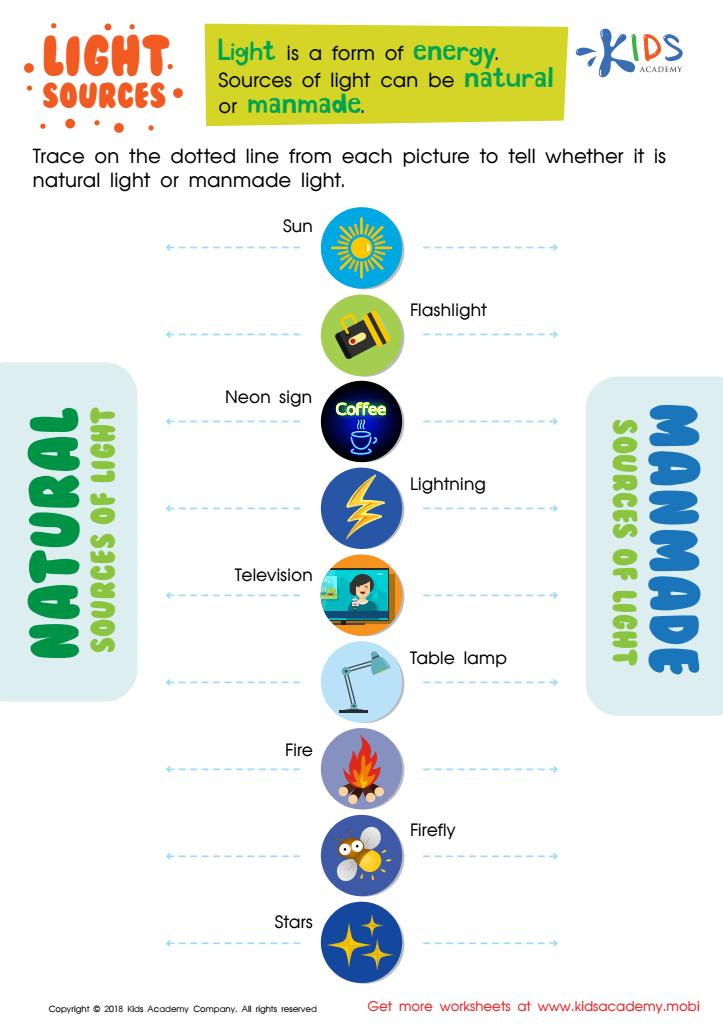

Natural and Manmade Light Sources Worksheet
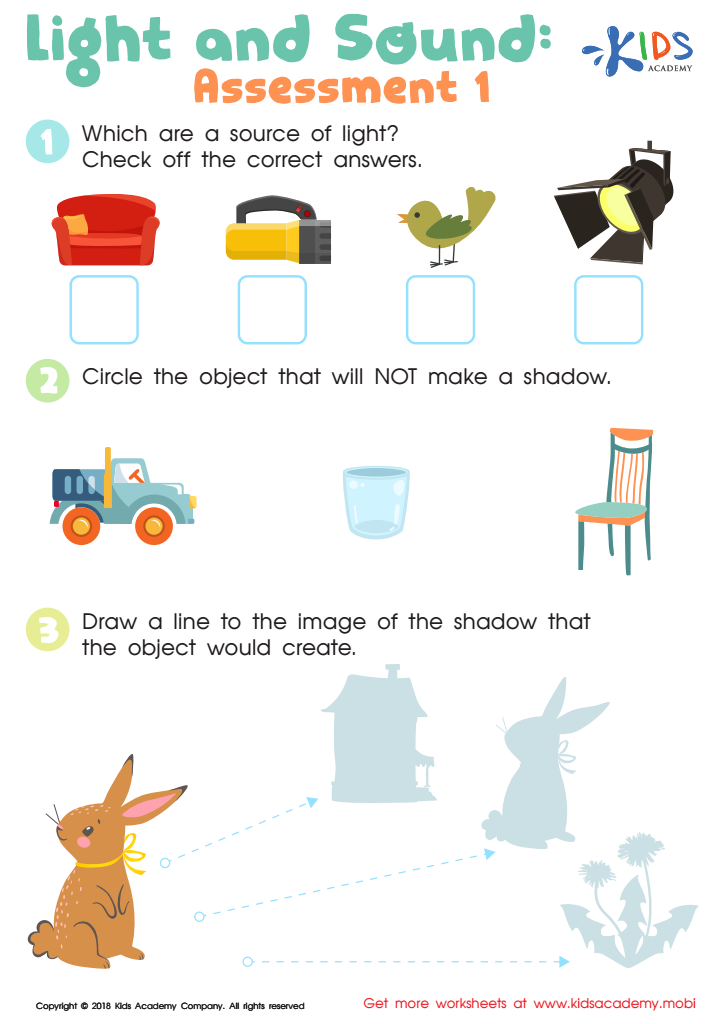

Light and Sound: Assessment 1 Worksheet
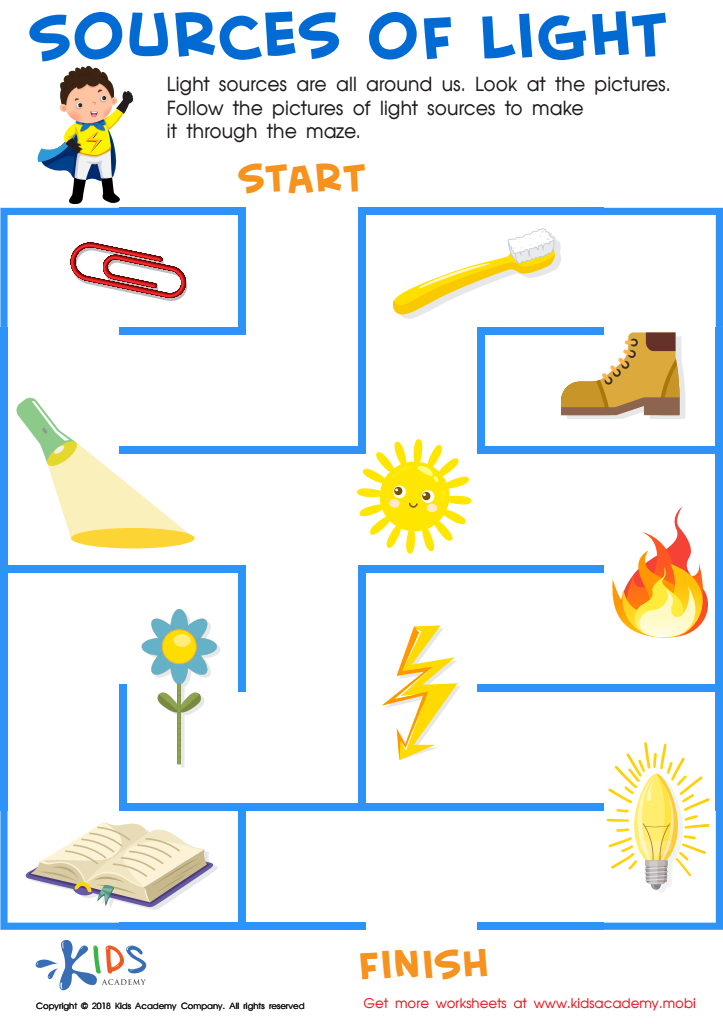

Sources of Light Worksheet
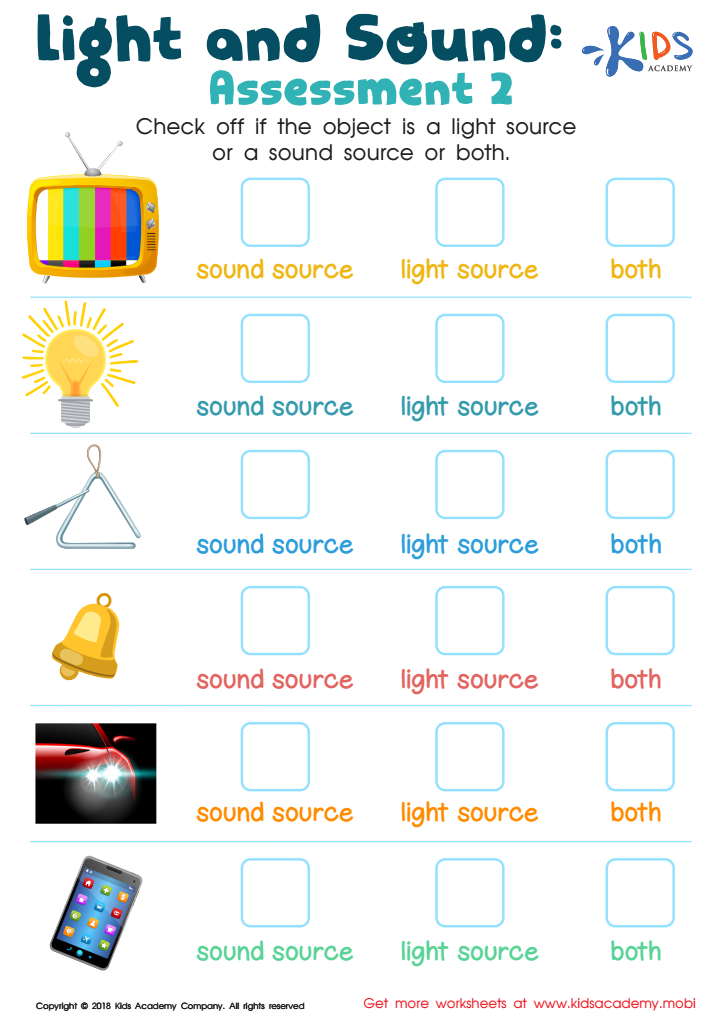

Light and Sound: Assessment 2 Worksheet
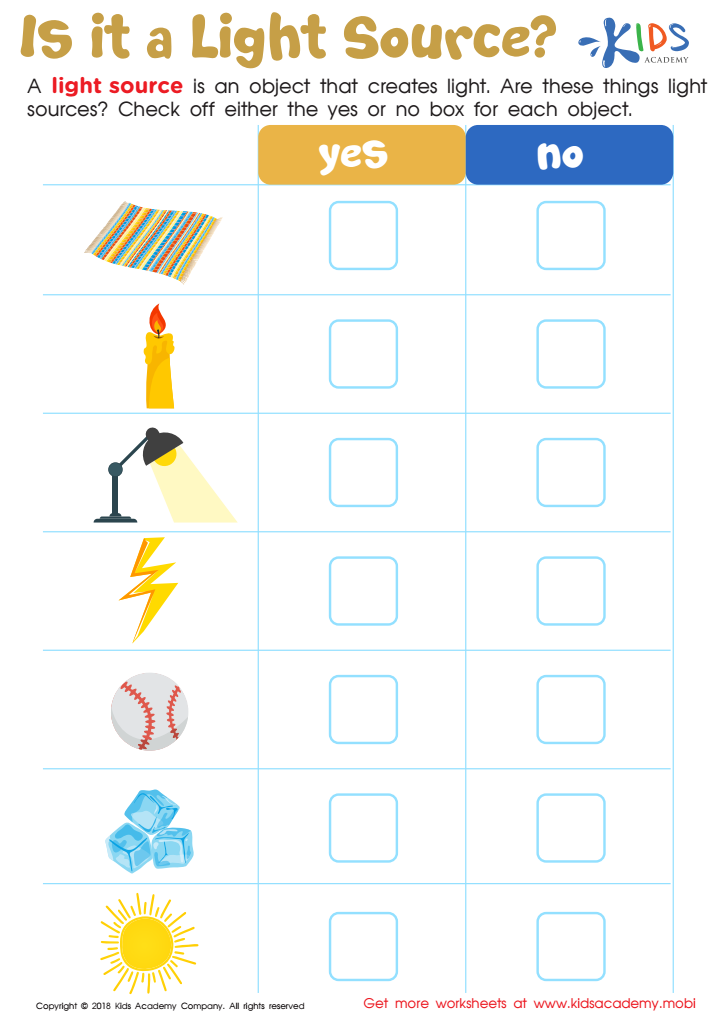

Is It a Light Source? Worksheet
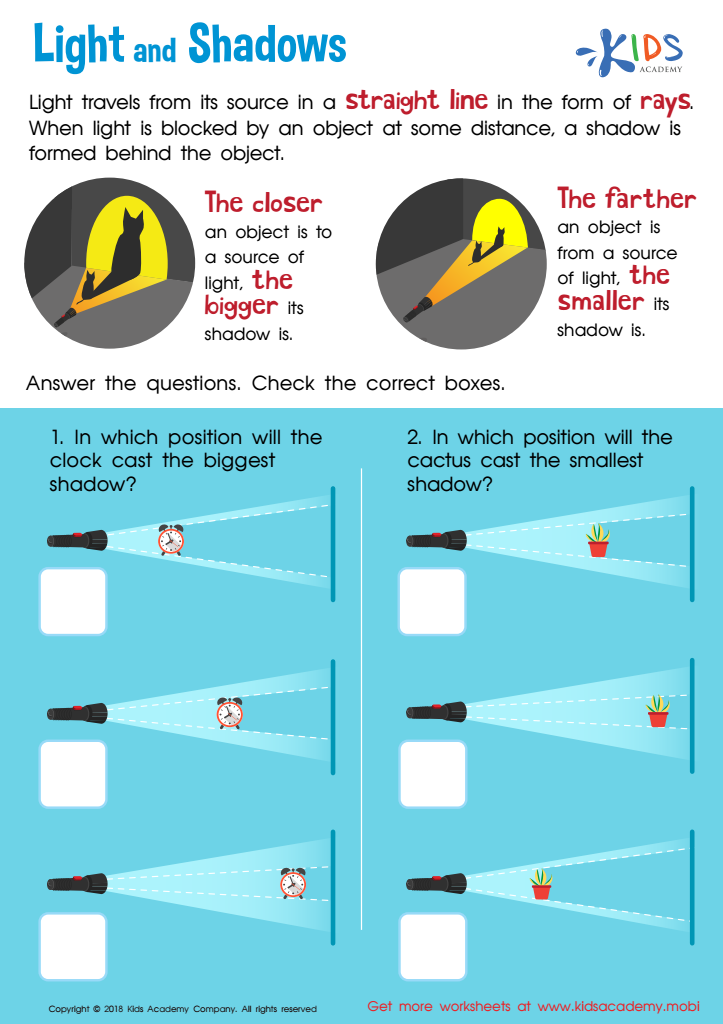

Light and Shadow Worksheet for Grade 3
Understanding light sources is vital for children aged 4-8 because it forms the foundation for their scientific knowledge and encourages curiosity about the world around them. At this formative age, kids are naturally inquisitive, often asking questions about why things are bright or dark. By introducing them to light sources—such as the sun, bulbs, and candles—they start to grasp fundamental concepts like reflection, shadow formation, and the differences between natural and artificial light.
Parents and teachers play a critical role in facilitating this exploration. By nurturing a child’s understanding of light, adults can help stimulate observational skills and critical thinking. Practical activities such as flashlights, prisms, and simple experiments can ignite a passion for science and learning.
Moreover, linking everyday experiences, like day and night cycles or colors in nature, enhances comprehension and retention. Teaching about light also opens discussions about safety (e.g., not looking directly at the sun) and environmental awareness (e.g., energy saving). Altogether, fostering an early appreciation for science through topics like light sources allows children to develop a lifelong love for inquiry and experimentation, essential traits in an increasingly scientific and technological world.
 Assign to My Students
Assign to My Students




%20(1).jpg)
